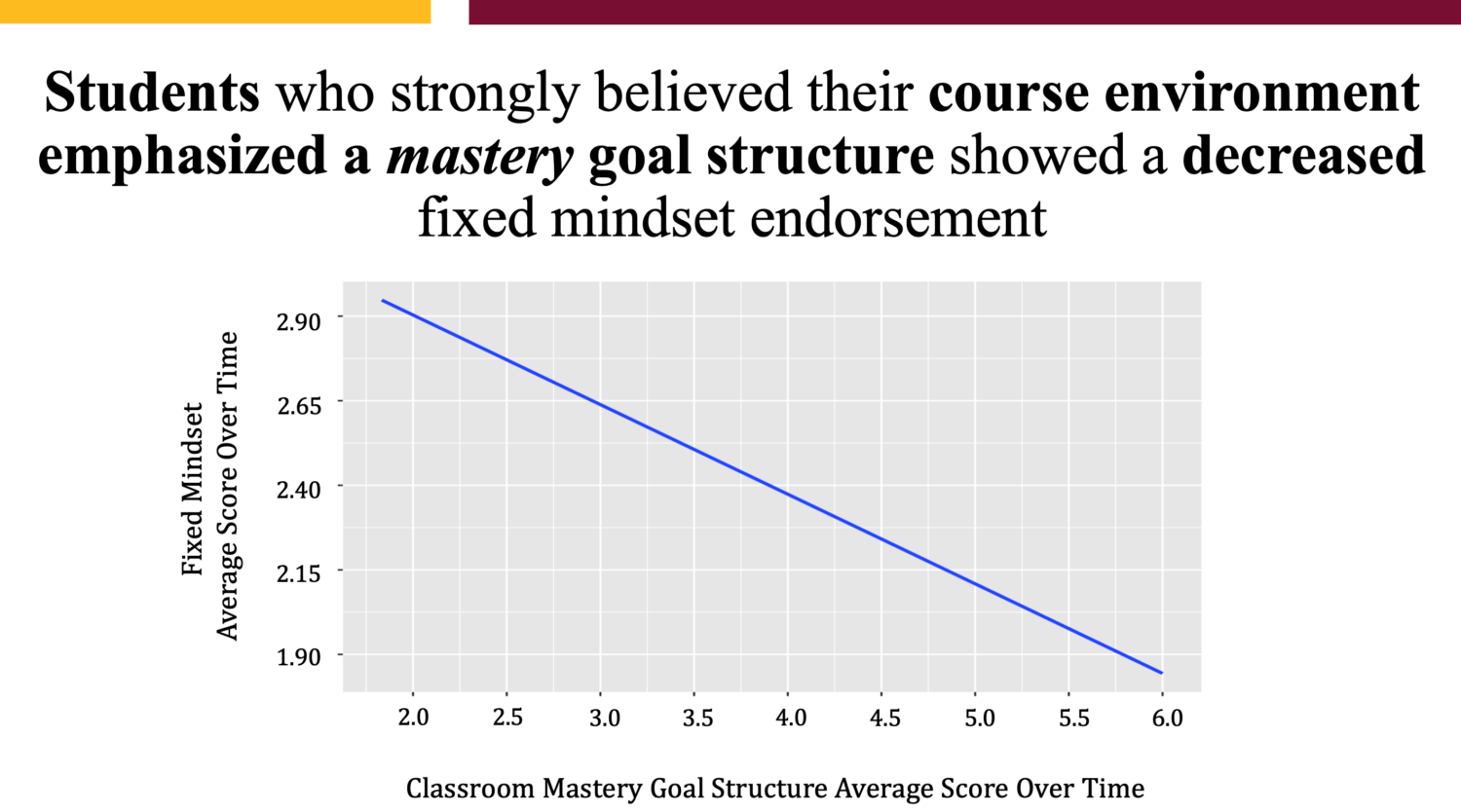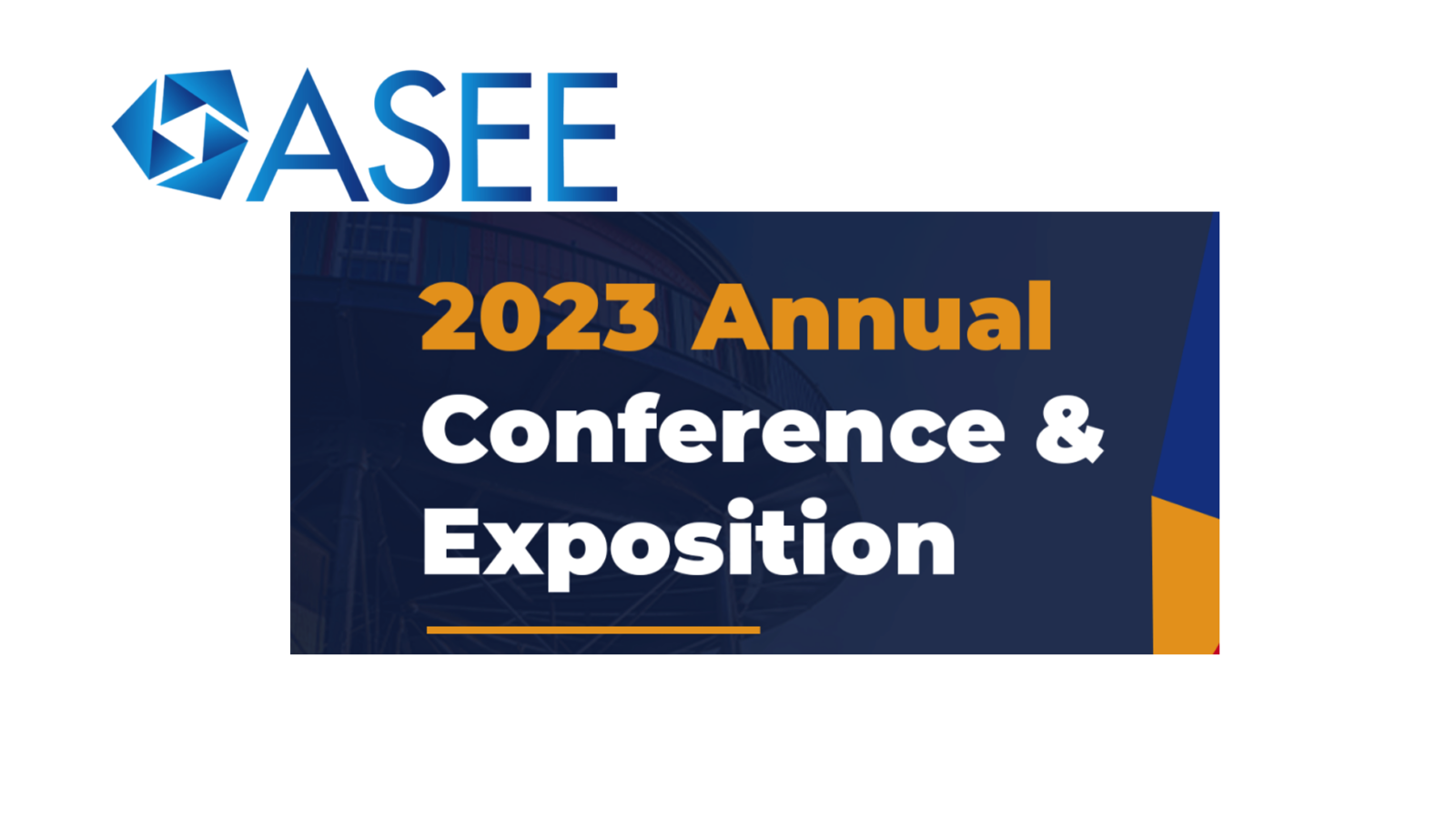Brief Overview of Study
Students, like all people, have elements of both growth and fixed mindsets. Carlo Dweck’s work claims that people can endorse both a fixed and growth mindset. Yet, there remains a gap in the literature regarding the factors influencing a fixed versus growth mindset among engineering students. Specifically, it is unclear what drives engineering students’ adoption of a fixed view of their abilities as opposed to a belief in the malleability and potential for the growth of their cognitive capabilities
This study examined if and, most importantly, how a group of undergraduate engineering students’ mindsets changed over the course of a semester. Dweck and colleagues’ early work asserted that those who believe intelligence is malleable and can be developed over time (i.e., growth mindset) were more likely to adopt mastery goals. Conversely, individuals with a fixed view of intelligence were more likely to endorse performance goals. Students’ goal orientations were used as possible explanatory factors to help understand why their mindsets are shifts.
Research questions:
- Do students’ fixed and growth mindsets shift from the beginning to the end of the semester in three gateway engineering courses?
- What motivational sources help explain students’ mindset shifts over the course of a semester?

Data came from engineering students enrolled at a Hispanic-Serving Institution. The results presented in this study should be thought of as baseline findings from students enrolled in courses where faculty members have not yet benefited from the formal Mastery-Based Grading training program or learning community.
RQ1 Brief Overview of Results:
We studied shifts in both types of student mindsets over three one-semester courses. We found no significant change in students’ growth mindset at the beginning of the semester compared to the end of the semester. However, students’ fixed mindsets showed a statistically significant increase of 0.42-points from the beginning of the semester to the end of the semester, with an effect size of 0.43.
RQ2 Brief Overview of Results:
Two multilevel models were used to understand why students’ fixed mindsets may have increased 1) personal sources (i.e., mastery goal, performance goal, and internal recognition), and 2) situational sources (i.e., classroom goal orientations and external recognition). In the model focused on situational sources, we found that students’ fixed mindset increased when they perceived their classroom environment endorsed a performance-approach goal structure and by receiving external recognition. When comparing both models, students’ fixed mindset increase was largely explained by classroom environmental sources. Specifically, students’ fixed mindsets increased when they perceived that their classroom environment valued a demonstration of competence (i.e., classroom performance-approach). Being recognized as an engineer by peers and instructors also increased students’ fixed views of their abilities. Conversely, one situational source was found to decrease students’ fixed mindset views, i.e., a classroom environment that promotes mastery goals.


Brief Conclusion
Our study points to an apparent and crucial role engineering classroom environments have in promoting certain mindsets. The study concludes with one pedagogical strategy that may help mitigate the inadvertent promotion of a fixed mindset, e.g., a mastery learning pedagogical intervention.


